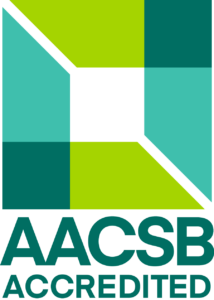Introduction to data science using R and Python
- Ending: Examination
- Range: 0P + 4C
- Semester: summer
- Year: 1
- Faculty of Economic Informatics
Teachers
Included in study programs
Teaching results
Completion of the course assumes the development of IT skills in the programming languages R and Python in the context of further study of data science.
Knowledge
Students will gain an overview of programming languages in the field of data science and will learn to work with the programming languages R and Python. They will gain a basic overview of the use of these programming languages in the field of data science, especially in the field of data visualization.
Competencies
Based on the above knowledge, students will be able to choose a suitable programming language according to its parameters and perform adequate statistical analyses, or data processing analyses in these programming languages.
Skills
During the educational process, they will acquire skills that will enable students to load, process and analyze data necessary for further data science analyses, or to perform such operations and create reports that can help with managerial decision-making.
Indicative content
1. Introduction to R. RStudio. Data types and data structures in R. Vectors, matrices, lists, arrays, data tables.
2. Object manipulation in R. Bulk calculations. Other objects in R. Creating custom functions.
3. Conditional statements. Loops.
4. Basics of graphics in R. Other types of graphs in R. Working with colors.
5. Loading and saving data. R libraries (packages).
6. Introduction to statistical analysis in R. Generating pseudo-random numbers.
7. Data Science in R. Data visualization. ggplot2 library.
8. R Shiny. RMarkdown.
9. Introduction to Python. Jupyter Lab environment. Data types and data structures in Python.
10. Conditional statements. Loops. Creating custom functions. Python libraries (modules) (Numpy, Scipy, Pandas, ...).
11. Linear algebra. Pseudo-random number generation. Data loading. Introduction to data science in Python.
12. Graphics in Python. Data visualization.
13. Markdown. Dash interface.
Support literature
1. DE LAFAYE MICHEAUX, P. – DROUILHET, R. – LIQUET, B. The R Software. Fundamentals of Programming and Statistical Analysis. New York : Springer, 2013.
2. ALBERT, J. – RIZZO, M. R by Example. New York : Springer, 2012.
3. LANTZ, B. Machine Learning with R. Second Edition. Birmingham : Packt Publishing, 2015.
4. JEKEL, C. Numerical Python: Scientific Computing and Data Science Applications with Numpy, SciPy and Matplotlib. In Siam Review, vol. 62, 2, 2020.
5. PECINOVSKÝ, R. Python. Kompletní příručka jazyka pro verzi 3.8. Praha: Grada Publishing, 2020.
6. PILGRIM, M. Python 3. Ponořme se do Python(u) 3. Praha: CZ.NIC, z. s. p. o., 2011.
7. UNPINGCO, J. Python for Probability, Statistics, and Machine Learning. Second Edition. Cham: Springer Nature Switzerland AG, 2016.
8. PÁLEŠ, M. Jazyk R pre aktuárov. Bratislava : Vydavateľstvo Letra Edu, 2019.
9. WICKHAM, H. – GROLEMUND, G. R for Data Science: Import, Tidy, Transform, Visualize, and Model Data. OREILLY, 2017.
10. CHANG, W. R Graphics Cookbook: Practical Recipes for Visualizing Data. OREILLY, 2017.
11. SCAVETTA, R. J. – ANGELOV, B. Python and R for the Modern Data Scientist: The Best of Both Worlds. OREILLY, 2021.
Requirements to complete the course
The semester work - the written test - 40%,
The final written test - 60%
Achieving at least 51% of the maximum points assigned for the exam.
Student workload
70 hours of lectures,
70 hours preparation for seminars,
42 hours preparation for written work.
Language whose command is required to complete the course
slovak
Date of approval: 15.05.2025
Date of the latest change: 27.08.2025

